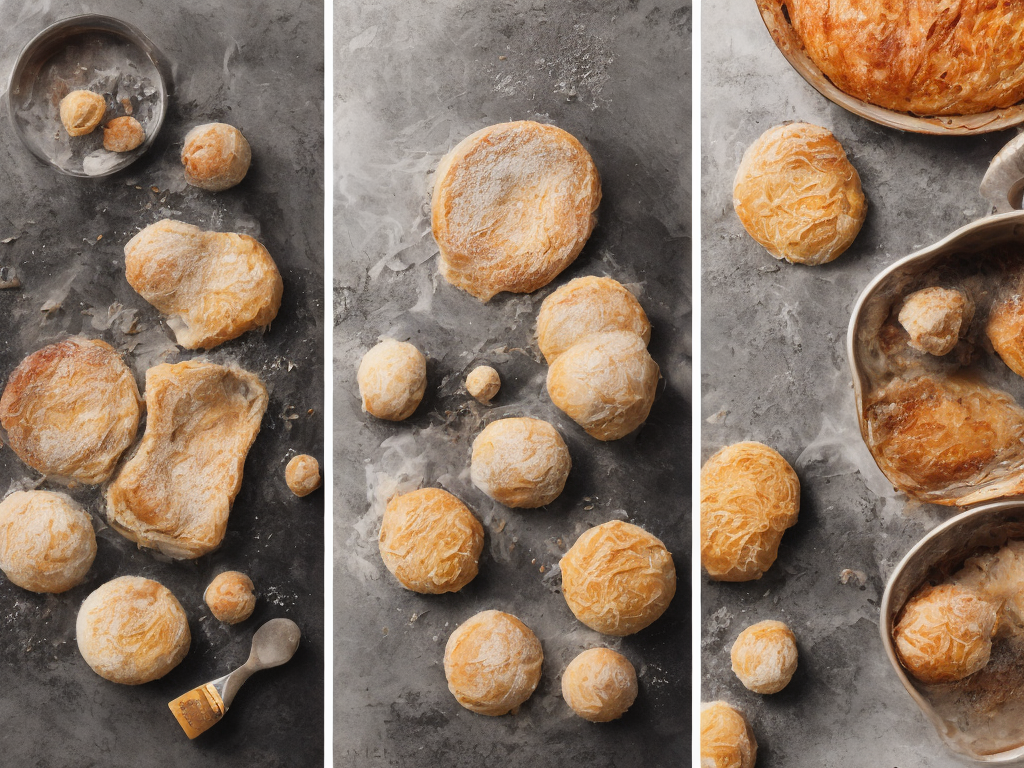
Difference Between Bake And Broil: Understanding Cooking Techniques
When it comes to utilizing your oven for cooking, two commonly used techniques are baking and broiling. While both methods involve using the oven, they differ significantly in terms of temperature, cooking time, and the type of heat used. In this article, we will explore the difference between baking and broiling, their uses, as well as some helpful tips to ensure success in the kitchen.
To begin, let's start by defining each technique. Baking is a method of cooking food by surrounding it with dry heat, typically from the bottom and top elements of an oven. It involves slower cooking at moderate temperatures, usually between 300-450 degrees Fahrenheit (150-230 degrees Celsius). In baking, the heat gradually cooks the food from the outside to the inside, resulting in even browning and a moist interior.
On the other hand, broiling is a cooking method that applies intense, direct heat from the top element of the oven. The food is placed on a rack near the top of the oven, and the heat quickly sears and cooks the surface of the food. Broiling is typically done at high temperatures, usually around 500 degrees Fahrenheit (260 degrees Celsius), for a shorter period of time.
Now that we have a basic understanding of baking and broiling, let's explore their individual uses. Baking is best for cooking foods that require even heat distribution, such as cakes, cookies, bread, casseroles, and roasted vegetables. It is ideal for dishes that need to cook for a prolonged period, allowing the flavors to meld together and develop. Baking also results in a pleasant golden-brown crust and a moist, tender interior.
Broiling, on the other hand, is well-suited for cooking foods that benefit from quick browning and caramelization on the top surface. It is commonly used for cooking fish fillets, steaks, burgers, chicken breasts, or even vegetables that need a bit of char. With broiling, the high heat quickly sears the food, creating a crispy, flavorful exterior while preserving the moisture within. It's worth noting that broiling is not recommended for thick cuts of meat or dishes that require longer cooking times, as they may not cook through evenly.
One important factor to consider when baking or broiling is the positioning of the food in the oven. For baking, the food is typically placed in the center of the oven to ensure even heat distribution from both the top and bottom elements. This allows for a consistent cooking process, resulting in even browning and a properly cooked interior.
On the other hand, broiling requires the food to be situated near the top of the oven, right below the broiler element. This ensures that the food receives direct, intense heat from the top element, enabling quick browning and cooking of the surface. It's essential to keep an eye on the food while broiling, as the high temperatures can cause the food to burn if left unattended.
When it comes to cooking temperatures, baking usually requires lower temperatures compared to broiling. The lower heat in baking allows the food to cook slowly, helping it retain moisture while flavors develop. Baking temperatures can range from 300-450 degrees Fahrenheit (150-230 degrees Celsius) depending on the recipe and the type of food being cooked.
On the contrary, broiling requires higher temperatures to achieve that desired quick sear. The broiler element can reach temperatures of around 500 degrees Fahrenheit (260 degrees Celsius) or even higher. The intense heat gives the food a charred and caramelized surface, enhancing its taste and visual appeal.
Although baking and broiling have their distinct uses, there are certain scenarios where you can combine both techniques to achieve the desired results. For example, you can bake a casserole for most of its cooking time to allow flavors to meld, and then broil it for a few minutes at the end to create a crispy, golden crust. This combination can add textural contrast and enhance the dish's overall presentation.
In conclusion, baking and broiling are two cooking techniques that utilize the oven but differ significantly in terms of temperature, cooking time, and heat source. Baking involves slower cooking with even heat distribution from both top and bottom elements, resulting in even browning and a moist interior. On the other hand, broiling utilizes intense, direct heat from the top element of the oven, quickly searing and cooking the surface of the food. Broiling is best for quickly browning and caramelizing the top of the food, creating a crispy exterior while preserving the moisture within. Understanding the difference between baking and broiling allows you to choose the appropriate technique for the dish you are preparing, leading to successful culinary outcomes and delicious meals.
 Self-Instruct
Self-Instruct